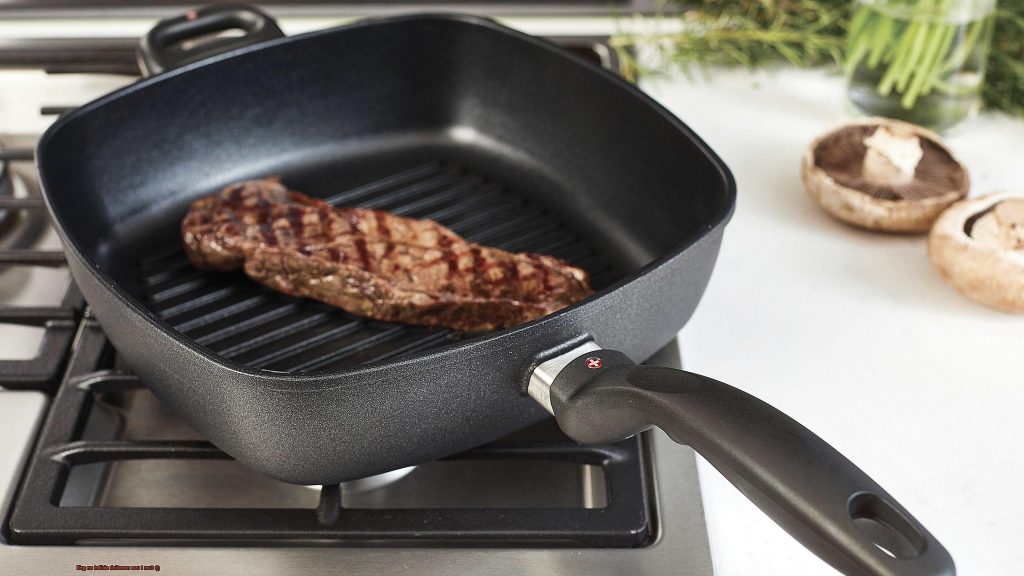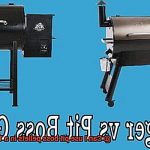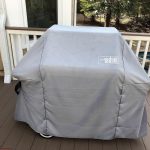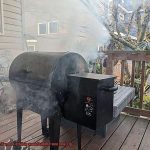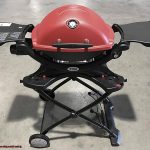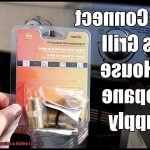As a barbecue lover, you know that the right materials and preparation are key to achieving that perfect smoky flavor. But what if you only have access to wet wood? Can you still achieve that mouth-watering taste?
The debate over whether to use dry or wet wood has been ongoing for years. Some swear by dry wood, while others argue that with the right techniques and equipment, wet wood can actually enhance the flavors of your barbecue. So, what’s the truth?
Many people believe that wet wood should be avoided at all costs, as it produces excess smoke and can ruin the taste of food. However, in this blog post, we’ll explore both sides of the argument. We’ll dive deep into the pros and cons of using wet wood, what type of wood works best, how to dry wet wood effectively, and ultimately whether it’s worth the effort.
Are you ready to up your grilling game and learn something new about cooking with wood on your barbecue? Then keep reading. We’ll answer all your burning questions and guide you on how to use wet wood to achieve that perfect smoky flavor you’re after.
Contents
The Pros and Cons of Barbecuing with Wet Wood
Barbecue aficionados are always on the lookout for ways to elevate their cooking game. One question that often arises is whether or not to use wet wood for barbecuing. As with many things in life, there are pros and cons to this approach, and it’s essential to consider them before making a decision.
Pros
- Smoky flavor explosion: One of the primary benefits of using wet wood is that it produces a lot of smoke, which adds depth and complexity to the meat’s flavor. The rich smoky flavor that wet wood imparts is what sets barbecued meats apart from any other cooking method.
- Slow-burning: Wet wood burns more slowly than dry wood, providing a longer cooking time without the need for adding more fuel. This makes it perfect for low-and-slow cooking methods like smoking, ensuring that the meat is cooked to perfection.
Cons
- Tricky to light: Wet wood can be challenging to ignite, which can lead to frustration and wasted time. You’ll need extra kindling or a chimney starter to get it going, which can add time and effort to the preparation process.
- Inconsistent temperatures: Wet wood produces more steam than dry wood, which can make it challenging to maintain consistent cooking temperatures. The excess steam can cause fluctuations in temperature, resulting in uneven cooking and a less-than-ideal final product.
- Pollutant release: Burning wet wood releases more pollutants into the air than dry wood, making it a less eco-friendly option. Those who are conscious of their environmental impact may want to consider an alternative method.
To use wet wood effectively for barbecuing, it’s best to dry it out first. This reduces the amount of steam it produces and ensures even cooking. You can dry it out by leaving it in a dry place for a few weeks or by using a dedicated wood dryer or kiln. Alternatively, you could consider smoke-roasting techniques, which involve cooking the food at a lower temperature for a longer period of time. This allows the wet wood to dry out naturally while still imparting a smoky flavor to the meat.
Understanding the Types of Woods for Barbecuing
Understanding the different types of woods for barbecuing is crucial for achieving the best results when grilling. Let’s take a closer look at the different types of woods and how to prepare wet wood for BBQ.
Hickory
This wood is perhaps the most popular for barbecuing because of its strong, smoky flavor. It pairs well with beef and pork and is great for smoking ribs and brisket.
Mesquite
Another popular wood, mesquite has a stronger flavor than hickory and is best used with beef and game meats.
Oak
A milder wood that pairs well with any type of meat, oak is great for smoking brisket and ribs. It’s often used as a base wood when smoking with stronger woods like hickory or mesquite.
Applewood
With its sweet, fruity flavor, applewood pairs well with pork and poultry. It’s great for smoking pork shoulder and chicken.
Cherrywood
This mild, sweet wood goes well with pork, poultry, and fish. It’s great for smoking salmon and other types of fish.
Pecan
Similar to hickory but milder and sweeter, pecan wood pairs well with beef, pork, and poultry.
When it comes to using wet wood for barbecuing, it’s important to note that wet wood can produce more smoke and less heat than dry wood. This can lead to longer cooking times and unevenly cooked meat. However, if you prepare the wet wood properly, it can still be used for BBQ.
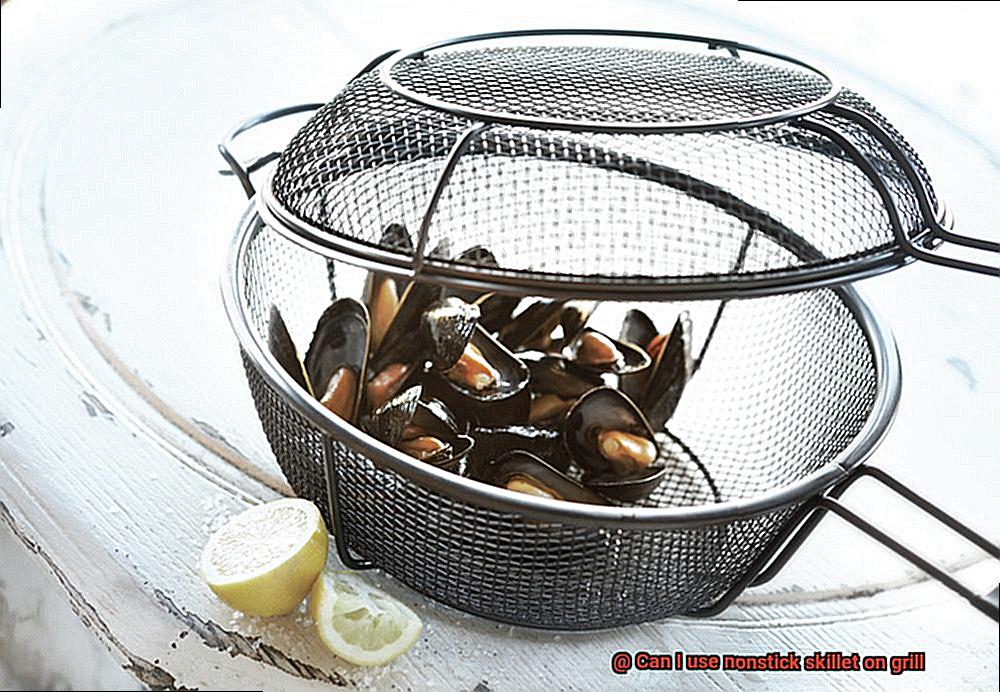
To prepare wet wood for barbecuing, start by splitting it into smaller pieces. Then, let it dry out in a covered area for several weeks. This will help reduce the moisture content in the wood and allow it to burn more efficiently. Another option is to use a kiln or oven to dry out the wood more quickly.
If you’re short on time, you can also try “smoke-roasting.” This involves cooking the food at a lower temperature for a longer period of time, allowing the wet wood to dry out naturally while still imparting a smoky flavor to the food.
How to Dry Out Wet Wood
When it comes to barbecuing with wood, using wet wood can be a challenge. It produces more smoke, which can lead to a bitter taste in your food. Therefore, it’s essential to dry out wet wood before using it for barbecuing. Here are five sub-sections to help you achieve this.
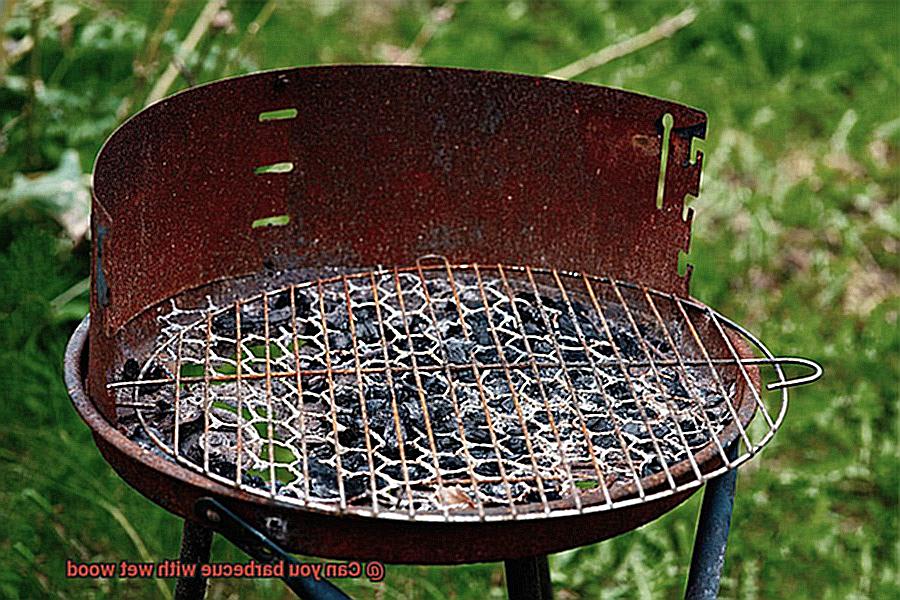
Splitting the Wood
The first step in drying out wet wood is to split it into smaller pieces. This will allow for more surface area to be exposed to air and therefore, dry out faster. Use a sharp axe or hatchet to split the wood into smaller pieces. By doing so, the moisture in the wood can evaporate more quickly, speeding up the drying process.
Stacking in a Dry and Airy Location
After splitting the wood, stack it in a dry and airy location, such as a covered porch or garage. Make sure the stack is not too high – waist height is ideal. Proper airflow is key when drying out wet wood. Therefore, leave space between each piece and avoid stacking them too tightly together.
Ensuring Proper Airflow
To speed up the drying process, ensure proper airflow around the stacked wood. You can use a fan or dehumidifier for this purpose. Place the fan or dehumidifier near the stack of wood and turn it on low. This will help to circulate the air around the stacked wood and speed up the drying process.
Checking Moisture Level
Depending on the type of wood and how wet it is, drying time can vary. Generally, it can take anywhere from a few days to a few weeks for the wood to completely dry out. You can test the moisture level by using a moisture meter, which can be purchased at most hardware stores. Once the moisture level is below 20%, it’s safe to use the wood for barbecuing.
Proper Storage
Once the wood is dry, store it in a dry place until ready to use for your barbecue. Remember, using wet wood can result in weak fires, excessive smoke, and an unpleasant taste in your food. Therefore, store the wood in a dry place to prevent it from becoming damp again. You can use a covered area or a shed to protect the dry wood from moisture.
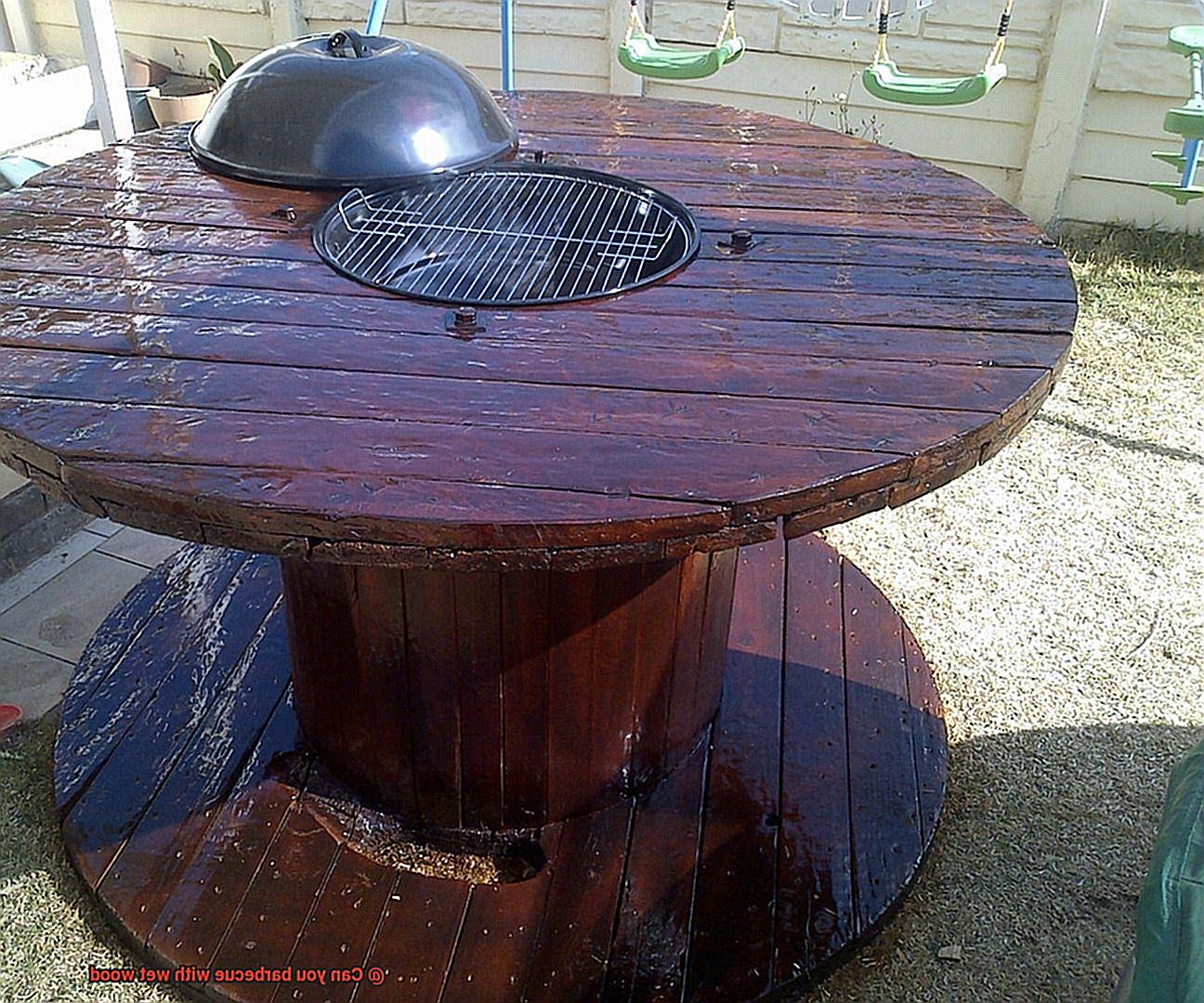
Techniques for Cooking with Wet Wood
Don’t let damp wood ruin your cookout plans. As an expert in the field of barbecue, I am here to share some fantastic techniques that will help you produce mouth-watering barbecue, even with wet wood.
To start, soaking dry wood chips or chunks in water for at least 30 minutes before use is one of the easiest ways to work with wet wood. This technique allows the wood to absorb moisture, producing smoke when placed on the heat. It’s a simple solution that can make all the difference in your BBQ experience.
If you want a more controlled smoking process, consider using a smoker box. A smoker box is a small metal box that can be filled with wet wood chips or chunks and placed on the grill grates. This method traps the smoke and allows it to circulate around the food, infusing it with flavor. It’s an excellent option for those who want to add more depth to their barbecue dishes.
But what if you don’t have a smoker box? No problem. You can still create a makeshift smoker box by wrapping wet wood chips or chunks in foil and poking holes in the top to allow smoke to escape. This will produce similar results as using a smoker box, without having to purchase any additional equipment.
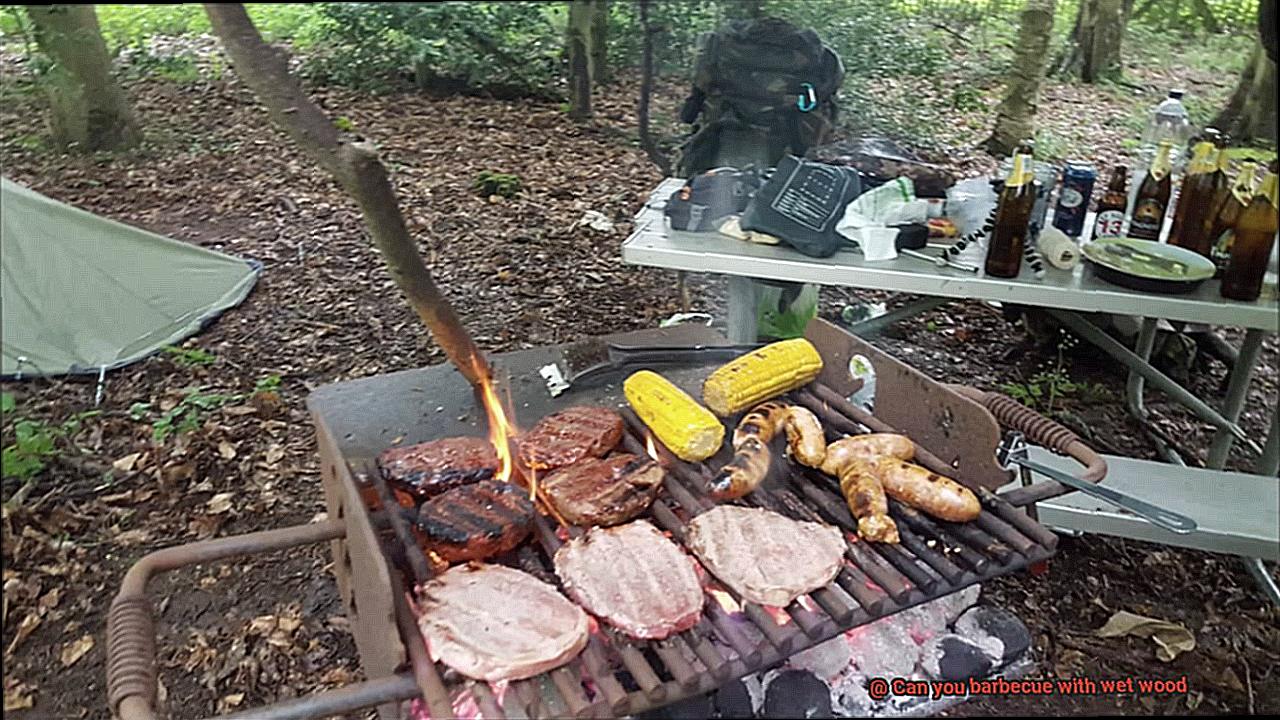
It’s important to keep in mind that wet wood takes longer to produce smoke than dry wood. Therefore, it’s crucial to be patient and wait for the smoke to start before placing your food on the grill. Additionally, wet wood may produce more steam than smoke. So, it’s essential to be mindful of this when cooking and adjust your cooking technique accordingly.
Tips for Controlling Temperature Fluctuations
Barbecuing with wet wood can be a daunting task, but it’s not impossible. Wet wood can cause temperature fluctuations, leading to uneven cooking and potentially ruining your food. However, with careful attention and monitoring, you can control these fluctuations and still produce mouth-watering barbecue. Let’s delve into some tips for controlling temperature fluctuations when barbecuing with wet wood.
Tip 1: Start with Dry Wood
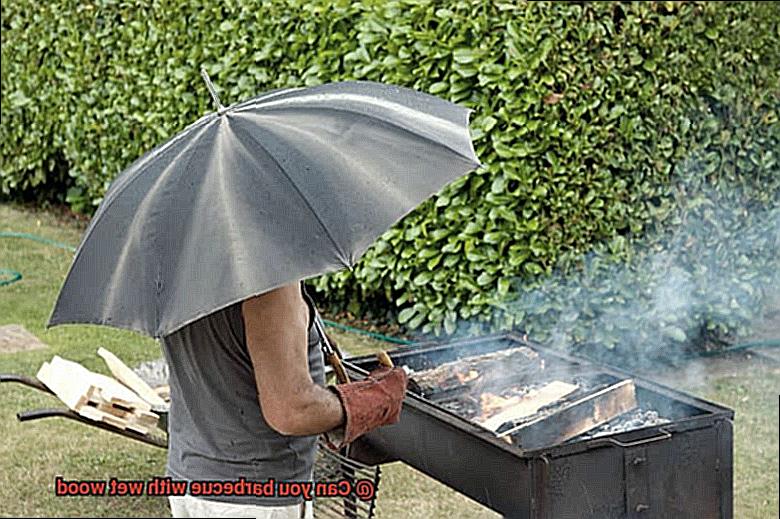
Starting with dry wood is crucial when barbecuing with wet wood. Wet wood takes longer to burn and can cause your grill to cool down, making it challenging to maintain a consistent temperature. Drying the wood before using it for barbecuing is essential. You can do this by storing the wood in a dry place for several weeks or by using a kiln or oven to remove moisture. Once the wood is dry, you’ll have better control over the temperature and smoke output.
Tip 2: Use Smaller Pieces of Wood
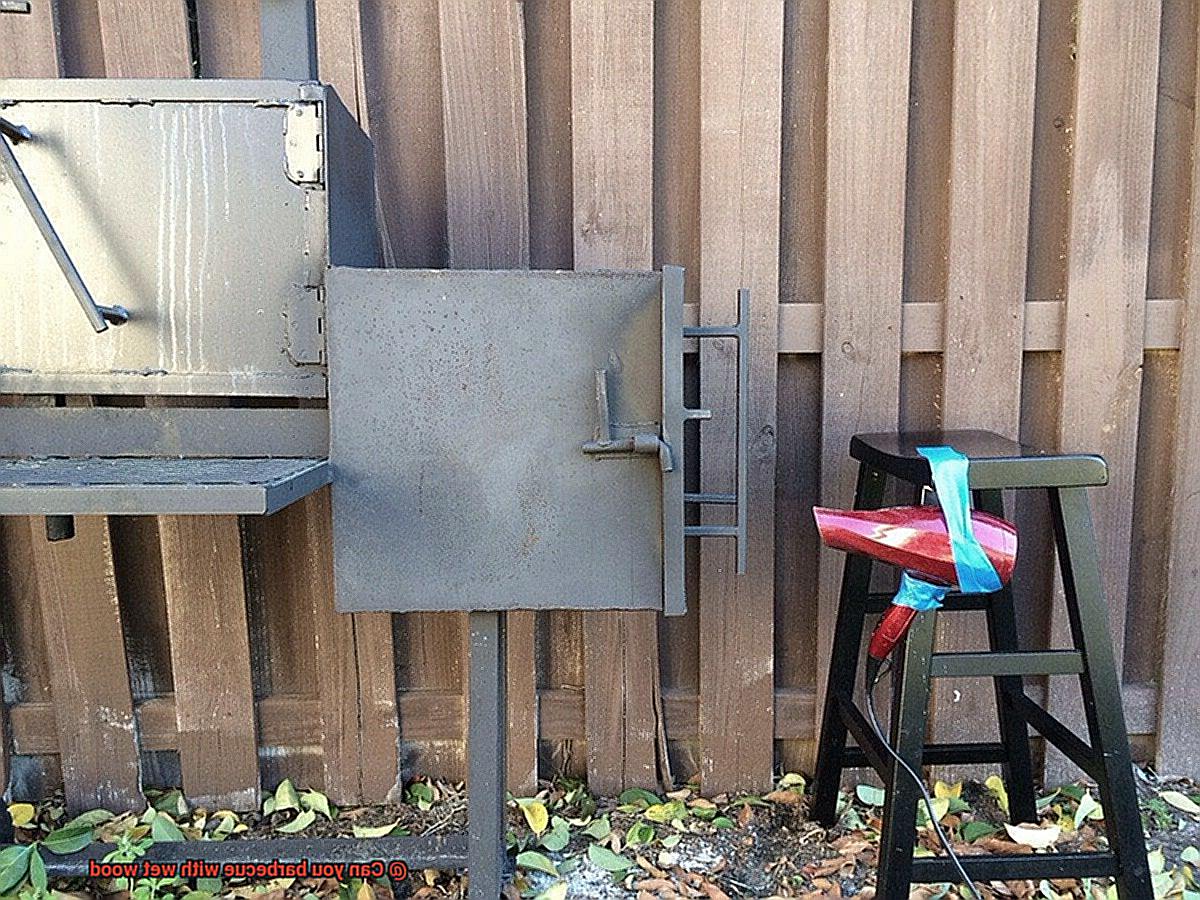
Using smaller pieces of wood will help ensure that the wood burns evenly and consistently. Wet wood can be difficult to ignite, so starting with dry wood for the initial heat source and adding wet wood in small amounts as needed can also help regulate temperature.
Tip 3: Pay Attention to Your Grill Setup
Proper ventilation is key when barbecuing with wet wood. Make sure that your grill is properly ventilated and that the air flow is not restricted. This will help ensure that the fire gets enough oxygen to burn evenly. You may also want to consider using a water pan or heat deflector to help regulate temperature and prevent flare-ups.
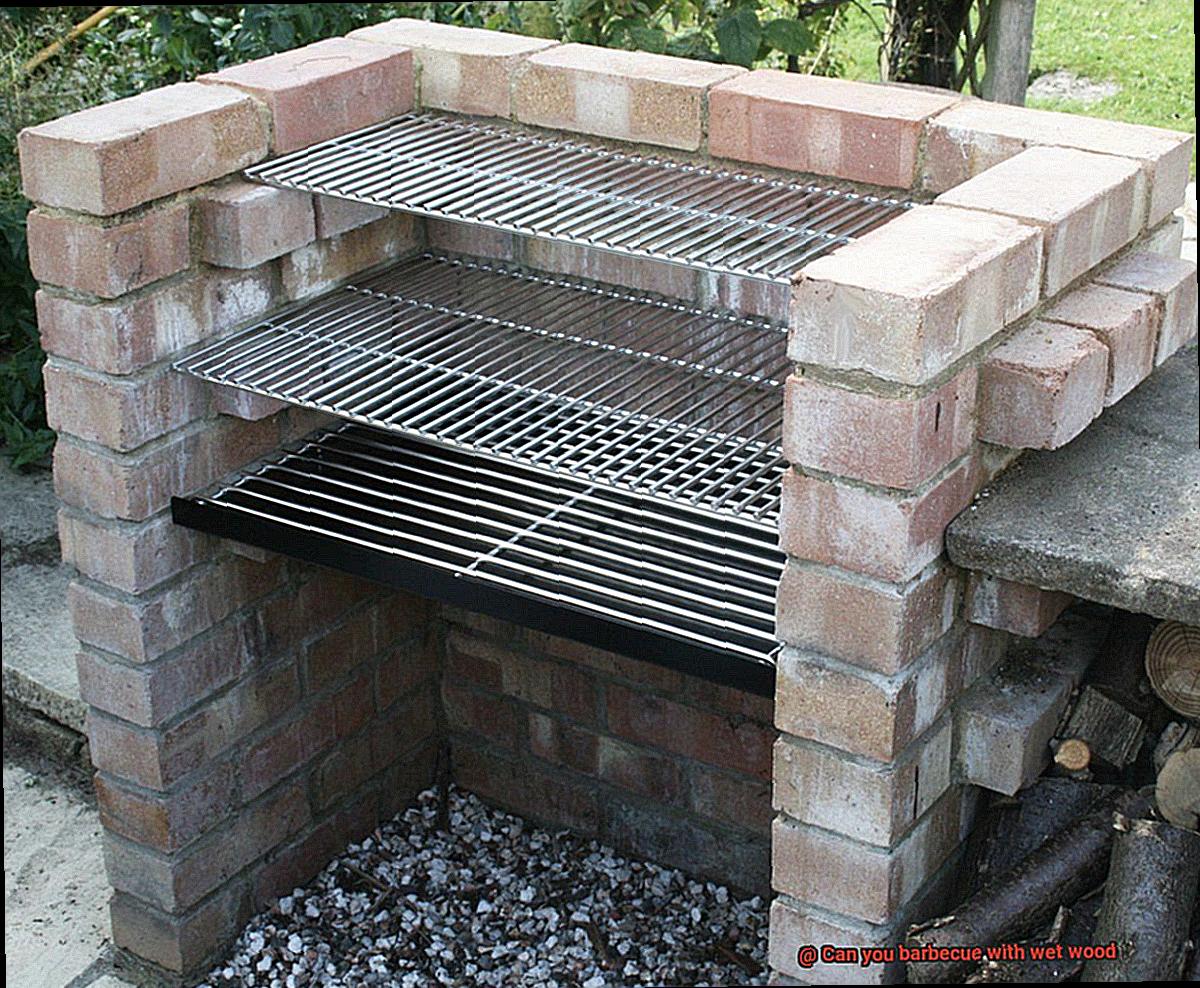
Tip 4: Monitor Your Grill Closely
Temperature monitoring is critical when barbecuing with wet wood. Keep an eye on the temperature gauge and adjust the vents as necessary to maintain a consistent temperature. You may also need to add more fuel or adjust the placement of the wood on the grill.
Tip 5: Practice and Patience
Practicing and being patient is key to mastering the art of barbecuing with wet wood. Don’t be discouraged if your first few attempts don’t turn out perfectly. Keep trying, and soon you’ll be able to produce delicious barbecue every time.
Smoke-Roasting: A Different Approach to Barbecuing with Wet Wood
Take your grilling game to the next level with smoke-roasting using wet wood. This unconventional method can produce mouth-watering results that are sure to impress your guests. Here are some key benefits of smoke-roasting with wet wood:
Moisture retention is crucial when it comes to barbecuing with wet wood, and this is where smoke-roasting comes in handy. The moisture from the wet wood creates steam that helps to keep the meat moist and juicy during cooking. This means that even if you cook the meat for an extended period of time, it will remain succulent and flavorful.
The distinct flavor profile that comes from the smoke of the wet wood is unparalleled. With so many different types of wood chips or chunks available, you can experiment with different flavors to create unique combinations that will tantalize your taste buds. Popular choices include hickory, mesquite, and applewood.
Another key benefit of smoke-roasting with wet wood is that it produces tender meat. The low heat and indirect cooking method allow the meat to absorb all the flavors from the smoke while remaining tender and succulent. It’s a win-win situation.
To get started with smoke-roasting, ensure that you start with dry wood and use smaller pieces. Pay attention to your grill setup, monitor your grill closely, and practice patience for best results. With careful attention and monitoring, you can control temperature fluctuations and produce delicious barbecue that will have everyone coming back for seconds (or thirds.).
Safety Considerations when Using Wet Wood
Before you start cooking, it’s essential to consider some safety measures. Wet wood can be a fire hazard and can also produce harmful smoke.
Firstly, wet wood is more challenging to ignite than dry wood, and it can release more smoke as it burns. This can lead to flare-ups and even explosions in severe cases. To minimize these risks, ensure that the wood is correctly dried before use. You can do this by storing it in a dry place for several weeks or months or by using a kiln or other drying methods. Plus, always monitor your fire closely while cooking with wet wood.
Another safety consideration is the potential for harmful smoke production. Wet wood can release dangerous chemicals and pollutants such as carbon monoxide, particulate matter, and volatile organic compounds (VOCs) when burned. These pollutants can be especially harmful to children, the elderly, and those with respiratory issues like asthma or COPD. To lessen this risk, make sure that the barbecue area is well-ventilated and consider using a fan to help disperse any smoke.
In summary, using wet wood for barbecuing can provide a unique smoky flavor to your food. However, it’s crucial to follow some safety measures to prevent any hazards. Here are some tips to keep in mind:
- Properly dry the wood before use.
- Monitor the fire closely while cooking.
- Ensure that the barbecue area is well-ventilated.
- Have a fire extinguisher nearby in case of emergencies.
yi3CmqyjoYg” >
Conclusion
In conclusion, the age-old debate of whether to use wet or dry wood for barbecuing has raged on for years. While some experts swear by dry wood, others argue that wet wood can enhance the flavors of your barbecue with the right techniques and equipment. The pros and cons of using wet wood were explored in detail, including its ability to produce a smoky flavor explosion and slow-burning characteristics, but also its difficulty in lighting and potential for inconsistent temperatures.
To achieve the best results when grilling with different types of woods such as hickory, mesquite, oak, applewood, cherrywood, and pecan, it’s crucial to understand their unique properties. However, drying out wet wood before use is essential to reduce steam production and ensure even cooking. Techniques like splitting the wood into smaller pieces, stacking it in a dry and airy location with proper airflow, checking moisture levels with a meter, and storing it in a dry place after drying were discussed.
Cooking with wet wood requires patience and careful attention to temperature fluctuations. Techniques such as soaking dry wood chips or chunks in water before use or using a smoker box can help control smoke output. Smoke-roasting is another alternative method that produces tender meat with unique flavor profiles.
Lastly, safety should always be top-of-mind when cooking with fire. Properly drying the wood before use, monitoring fires closely while cooking, ensuring proper ventilation in the barbecue area, and having a fire extinguisher nearby are all critical considerations to prevent any hazards.

